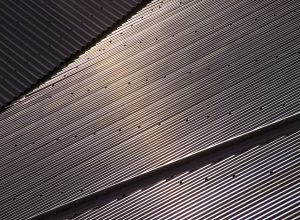What are The Best Roofing Materials, and Can Replacing The Roof Increase the Value of Your Home?
Many homeowners often find it difficult to decide whether they should repair their roof or replace it. Generally, roofs are made to last for about 15 years, but they do eventually wear out and may require a complete replacement. We talk about this in more detail in this article, but we’ll review a bit of the information here.
As a homeowner, you need to identify your reasons for considering roof work in the first place. Does the roof need repair or replacement as a practical matter? In other words, whether or not you were selling the home, does the roof have issues that affect the home’s habitability or functionality? There are some instances where you need to replace or repair the roof because that’s what needs to happen.
On the other hand, are you preparing to sell soon? Here’s where a more nuanced decision-making process is needed. If the roof is otherwise in good repair and only five or six years old, is replacing it really necessary? Worth pointing out is that replacement in this hypothetical case might only make sense if you intend to upgrade. If the roof is nearing the end of its lifespan, then mere repairs may be insufficient, and while you may save on the initial cost of the roof you’ll probably lose more on the asking price of your home.
You can see here where we’re replacing the roof on one of our investment properties:
If your home is already valued at near the top of similarly priced homes in your area, then an expensive replacement using premium materials may not push your home’s price much higher.
Speaking of upgrades, what are your options here?
Asphalt shingles

Asphalt shingles are the most commonly used roofing material. They don’t have to be limited to your standard gray or black, either. You’ll find a variety of colors, cuts, sizes, and shapes to suit your needs and the overall aesthetic of your home. Asphalt shingles are so common because of their practicality, architectural adaptability, and their comparatively low cost. They hold up equally well to extreme temperatures in winter and summer heat.
Asphalt shingles are going to cost the least in terms of materials and will be the least complex in terms of construction. They’re an easy go-to option for just about all homes.
Ceramic tiles

Ceramic tiles are one of the oldest roofing materials because of their practicality and durability. These tiles are most commonly featured on Spanish and Mediterranean-style homes. They can add a lot of character to adobe and stucco homes, but may not be the best aesthetic fit for some home styles. Tile roofs are effective in hot climates because they deflect the hot sun away from the house allowing the interior to cool, which is why in the US you’ll find them in the Southwest and on the West Coast.
Barrel tiles are the most popular ceramic tiles on the market and some can be shaped like thick shingles while others tend to look more like thin slates. They’re going to be more expensive than asphalt shingles, but remember they may not work for every style of home.
Cedar shingles

Cedar shingles have a rustic and natural appeal. You’ll find them mostly in the Pacific Northwest or in Appalachian states, but they work with just about any climate. Aesthetically, they best match homes that are built with wood, or homes in mountainous areas.
Cedar shingles are more flexible in some ways, and they can be tailored and applied to a greater range of architectural styles. As a building material, cedar has a lot of natural advantages that make it highly appealing, like natural resistance to moisture and UV rays, and its sap naturally repels insects. Cedar also ages quite well, so it will look great even as it gets older. Cedar obviously costs more than asphalt shingles, and it’s a bit more universal stylistically than ceramic tile.
Metal shingles

Metal roofing materials used to be found mostly on industrial buildings or placed on barns, sheds, and other agricultural buildings in long sheets. These days, as home styles get a bit more contemporary, you can find homes with metal roofs and shingles everywhere. They can have either a rustic or new look, depending on the architecture of the home. They especially work well in snowy climates among contemporary styled houses, but can absorb heat in the summer in warmer areas.
Metal roofs range in style and quality from galvanized low-end to high-end copper. They can also be from recycled metals, which is a great addition to a green home. Their biggest advantage is long-term performance due to their durable nature.
Slate roofing

Out of all of these materials, slate roofs are both the most expensive but also the most visually appealing. Unsurprisingly, they’re mostly found on high-value properties, adding to the already alluring nature of these home styles. A slate roof upgrade is likely to vastly increase the curb appeal of a high-dollar home, but tends to have the narrowest return on investment due to their high cost and the high price point of properties they’re usually found on.
Slate roofs are probably the least common material as well, which is mostly due to their weight. Still, slate roofs will last the longest out of all the styles. You can find buildings in Europe with slate roofs that have lasted for centuries, which is a testament to its longevity and hardiness.
The bottom line: what kind of return can you expect on your investment?
On average, the value added to homes where the roof has been replaced is about $12,000. Depending on the actual cost of the roof (and the type), homeowners can expect to see a 60% return on their investment. Keep in mind that these are averages, though.
When it comes to return on your investment, especially, remember that the higher cost of premium roofs like stone tiles may not add up to a similar return on investment, particularly on higher-priced homes where that increase in value adds up to a smaller percentage of the home’s overall price.
Curb appeal is hard to measure, and remember that even premium roofs may not be able to push the home’s value beyond the maximum price limits of the local market or neighborhood.
For more perspectives on real estate investment, check back with us each week as we post new blogs and be sure to sign up for our Priority Access List for advance listings and market updates. We’ll see you next week, and in the meantime, don’t forget that you can also keep up with us on Facebook and Twitter!
- Get It Right Solutions